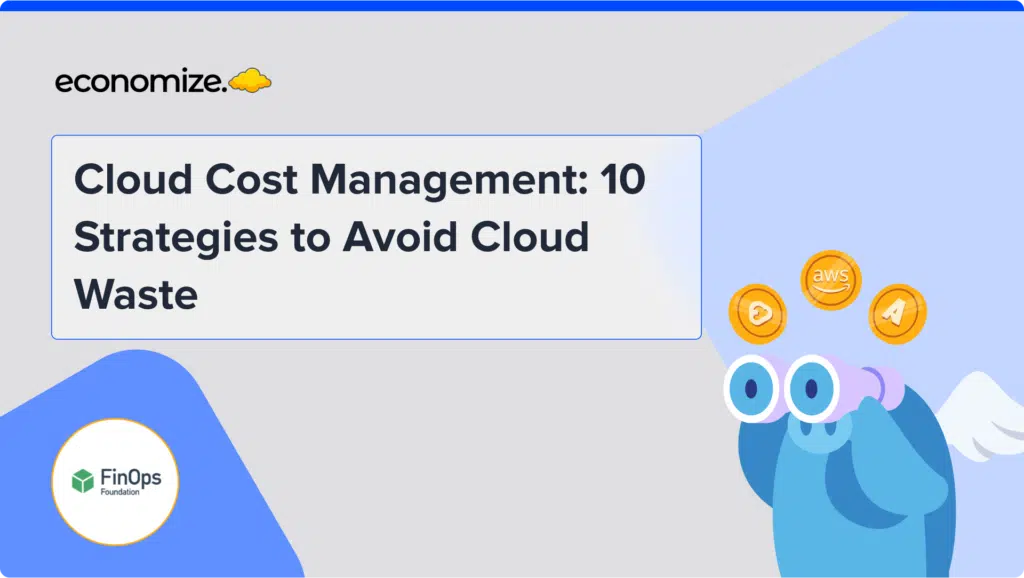What is Amazon Aurora?
Amazon Aurora is a fully managed relational database engine built on AWS cloud. It is compatible with both MySQL and PostgreSQL services. AWS lets you choose the preferred database engine and integrate it with the familiar Amazon RDS environment.
Amazon Aurora follows a cluster deployment model for data storage and replication which simplifies large deployments while utilizing the existing RDS features for management. Aurora is a high-performance storage system that can deliver up to 5 times the throughput of MySQL and up to 3 times the throughput of PostgreSQL, without making much changes to your existing applications.
For greater flexibility, Amazon offers Aurora Serverless, which can scale your compute resources based on demand. In this article, let us explore the different features of the serverless option and Aurora Serverless pricing factors. It’s important to get an understanding of these for subsequent AWS Cost Optimization.

What is Amazon Aurora Serverless?
Amazon Aurora serverless is an on-demand version of Amazon Aurora with autoscaling configurations. While traditional Aurora provides more control, Aurora Serverless simplifies the management and scaling of fluctuating workloads without the need for manual configurations. This offers more flexibility and shift your focus to optimizing your resources. Aurora Serverless pricing is based on a per-second basis for the database capacity that is used. It comes in two versions:
Amazon Aurora Serverless v1
Amazon Arora Serverless v1 is a cost-effective solution for infrequent, intermittent, or unpredictable workloads. It is available for both Amazon Aurora MySQL and Amazon Aurora PostgreSQL compatibility. It can scale up or scale down your database instance based on your workload. When the instance isn’t used it scales itself to zero.
While Aurora Serverless v1 can automatically scale up or down, long-running queries can act as a roadblock to these instances. A long-running query can cause the database to run out of resources and block the v1 instance from scaling until the query is completed.
Amazon Aurora Serverless v2
Amazon Aurora Serverless v2 supports all kinds of database workloads from development to test environments to highly demanding business-critical applications. It does not affect any ongoing operations while scaling. Hence it doesn’t need to look for a scaling point to expand capacity.

Aurora Serverless v2 also has a more granular scaling format than v1. The v1 instance can scale only in increments of 2x. But v2 can make more frequent and smaller scaling and readjustments.
Breakdown of Amazon Aurora Serverless pricing
Amazon Aurora serverless pricing works on a pay-as-you-go model, and you pay only for the resources that you use. However, there are several variables that needs to be considered while calculating the overall price of the database cluster. The key factors to consider are the compute, storage, and data transfer costs.
Capacity Cost
Aurora Serverless is measured in Aurora Capacity Units (ACU). Each ACU has approximately 2 GB of memory corresponding to CPU and networking. The ServerlessDatabaseCapacity and ACUUtilization metrics help you determine how much capacity your database is using. A single Aurora Capacity Unit costs $0.12 per ACU hour.
While creating the database cluster, you can specify the minimum and maximum number of ACUs you want to scale between. You can also configure your cluster to scale to zero after a certain period of inactivity
Storage Cost
Aurora Serverless has the capacity to scale up or scale down based on demand. Hence, you do not need to specify your storage capacity upfront or migrate to a new database instance when your storage needs expand.
Aurora storage unit is charged at $o.1o per GB/month. It is calculated based on the amount of storage you consume and for how long you consume that capacity. For example, consider that you need a storage capacity of 1000 GB for 1 month, which expands at a rate of 2% per day (or 20 GB every day) for 30 days. The storage cost is calculated as follows:
(1,000 GB * 30 days + 20 GB * 29 days + 20 GB * 28 days + …. + 20 GB * 1 day) * $0.10 per GB-month = $290.25
Cost of Read and write operations
Amazon Aurora Serverless pricing also factors in database operations. You’ll be charged for the read-and-write I/O operations. For write operations, up to 4KB in size, it is considered a single write. Whereas, you will be charged for two write operations if you do a write operation that stores 5KB in your database.
Data transfer Cost
In AWS, Data transfer from the internet to the Aurora database is free. But charges are applicable for data transfer to the internet, and other AWS services in different Regions and availability zones.
| Data Transfer OUT From Amazon RDS TO Internet | Pricing |
| First 10 TB/Month | $0.09 per GB |
| Next 40 TB/Month | $0.085 per GB |
| Next 100 TB/Month | $0.07 per GB |
| Greater than 150 TB/Month | $0.05 per GB |
The cost of Data transfer from other AWS regions ranges from $0.01 to $0.02, depending on the region and distance.
Benefits of using Aurora Serverless
Aurora Serverless DB costs more than an on-demand instance if you are using it for a long period of time. Hence, you need to make sure that your workload demand can offset this difference in pricing. Arora serverless is most suitable for certain types of workloads.
- Workload with fluctuation capacity: Aurora serverless works well with fluctuating workloads or intermittent workloads. Workloads like batch processing or data analytics are the ideal workloads for this serverless database.
- To meet your unknown capacity needs: While creating a new project, your capacity needs are uncertain. With, Aurora Serverless, you are not required to mention your capacity needs upfront. You can simply monitor your application for a few months to understand your capacity needs and you can scale up or scale down your capacity based on demand.
- For testing environments: Aurora serverless is the ideal solution for your testing environment where the workload is inherently low and unpredictable. You can also pause your instances when you are not using it, which can prevent unnecessary computing costs.
Strategies for Effective Cost Management in Aurora Serverless
Amazon Aurora Serverless pricing model provides more flexibility than traditional pricing. Aurora serverless can scale their storage capacity based on demand. You can scale up your resources when demand is in peak and scale down your resources when demand is low. Hence, you use only the capacity you need and pay only for the capacity you use. Some strategies to optimize your database costs are as follows:
Use Multiple Clusters
Consider splitting databases across separate clusters for v1. A cluster is a group of database servers working together as a single deployment unit. Splitting up clusters prevents scaling issues caused by unrelated databases and allows for the databases to scale independently based on their individual workloads. It also supports high availability.
Avoid Scale-Blocking Operations on v1
For Aurora Serverless v1 deployments, avoid long-running transactions or table locks. These operations can block scaling due to capacity constraints and prevent the serverless instance from optimizing resources efficiently.
Keep your queries and transactions short. Long-running queries can affect the performance of the database and prevent it from scaling up as required.
Use Serverless V1
Though Aurora Serverless v2 offers better scaling functionalities than v1, it charges twice the cost of v1. It is advisable to use v1 for predictable workloads as long as you can manage the scaling limitations. By avoiding scale-blocking operations in v1, you can ensure smooth scaling operations and significantly cut down your cloud bill as compared to v2.
Conclusion
This article explored Amazon Aurora and its serverless options v1 and v2, which will help you determine the right choice for your project needs. It also discussed the cost optimization strategies that can significantly reduce your database costs.
For predictable workloads, Aurora Serverless v1 serves as the right choice which can handle your minimal scaling needs. However, if you deal with an unpredictable workload or require advanced features like multi-AZ deployments Aurora Serverless v2 is your right choice.
Ultimately, choosing the perfect fit for your business depends on your workload and your budget constraints.
How can we help?
Tired of your cloud costs building up? Don’t let cloud costs weigh you down anymore. With Economize, you can slash your cloud expenditures by up to 30% effortlessly. Book a free demo with us today and discover how we can help you start saving in as little as 10 minutes.








